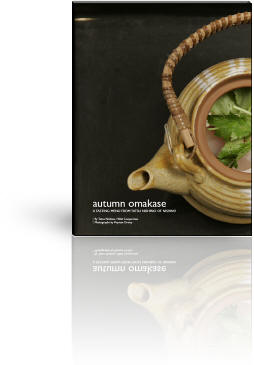 What an outstanding publication The Wine Spectator is! The recent June 15th, 2006 issue features an exciting, in-depth special edition on creating your own wine cellar. It’s a beautiful pull-out piece called A Connoisseur’s Guide to Wine Collecting and what a slick publication it is.
What an outstanding publication The Wine Spectator is! The recent June 15th, 2006 issue features an exciting, in-depth special edition on creating your own wine cellar. It’s a beautiful pull-out piece called A Connoisseur’s Guide to Wine Collecting and what a slick publication it is.
With beautiful photography and insightful articles, they lead the trusting Wine Spectator readers down bumpy road to wine collecting. The feature articles outline: “Five Winning Cellar Strategies” and “36 Wines to Buy Now.” Certainly that last one has Wine Spectator readers running to the store with their pull-out list in hand. In order to give you a sneak peak and a head start to the store to snap up these 36 wines to buy now, I thought I’d list a few of them here. Their “Balanced Cellar Selections” include such absolute must buy estates for any collector like: Beringer, Greg Norman, Stag’s Leap Winery, Chateau St. Jean, Penfolds, St. Clement, Gabbiano and, getting even more exciting for any serious wine collector, hard to get wines like: Beringer Merlot, Rosemount Shiraz, Campanile Pinot Grigio. Wolf-Blass Chardonnay and Taz Pinot Noir. What would a great collection be without such wines? Well these recommendations are a bit confusing as they don’t mention any vintages, but what would vintage matter to anyone collecting such extraordinary wines as these?
As you dig into this great piece of Wine Spectator journalism we finally reach the pinnacle of wine collecting as they recommend seven vintages of Beringer Reserve Cabernet. For their investment cellar, more wines from Penfold’s, Stag’s Leap Winery, Wolf Blass, Chateau St. Jean, Rosemount and Beringer are recommended. Certainly The Wine Spectator has done us all a great service with this well researched information and many johns will use this fine piece of wine journalism as their guide to building a wine cellar.
…but wait a second. Isn’t every one of these wines part of the World Wine Estates Portfolio? You know, World Wine Estates, that mega-beverage wine corporation. This must just be an accident as I can’t believe The Wine Spectator, that bastion of wine journalism ethics, would ever publish an advertising piece produced by some giant corporate advertiser in a way that it would look like it was produced by the editorial staff of the magazine. Without a doubt, they would mark such a piece as advertising so as not to confuse it with their editorial content.
So it must just be an coincidence that 100% of the wines in this special pull-out section are World Wine Estates brands that are heavily advertised in The Wine Spectator, and we can all rest assured that they would never publish an article that would confuse their readers between real content and advertising.
Should someone, somewhere feel a little dirty?





 There was this wonderful smell. Exotic, floating enticing, but what was it? It had been a while sense I’d experienced it and I couldn’t put my finger on it. Then it came to me it, that clean tang of Balsamic vinegar. This wine had VA and I loved it.
There was this wonderful smell. Exotic, floating enticing, but what was it? It had been a while sense I’d experienced it and I couldn’t put my finger on it. Then it came to me it, that clean tang of Balsamic vinegar. This wine had VA and I loved it.
 What an outstanding publication The Wine Spectator is! The recent June 15th, 2006 issue features an exciting, in-depth special edition on creating your own wine cellar. It’s a beautiful pull-out piece called A Connoisseur’s Guide to Wine Collecting and what a slick publication it is.
What an outstanding publication The Wine Spectator is! The recent June 15th, 2006 issue features an exciting, in-depth special edition on creating your own wine cellar. It’s a beautiful pull-out piece called A Connoisseur’s Guide to Wine Collecting and what a slick publication it is.


 Definition: pleonasm: the use of more words than are necessary to express an idea
Definition: pleonasm: the use of more words than are necessary to express an idea world of Champagne are no secret, it is the Récoltant Manipulant (RM) brands (small producers making Champagne from their own grapes) that offer the most interesting wines at the best value. The trick is knowing which to pick from the dozens of RM labels, which are now being imported into the USA.
world of Champagne are no secret, it is the Récoltant Manipulant (RM) brands (small producers making Champagne from their own grapes) that offer the most interesting wines at the best value. The trick is knowing which to pick from the dozens of RM labels, which are now being imported into the USA.